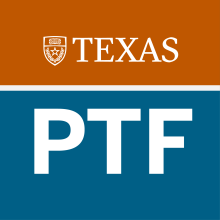Individual Fellow Initiatives

Curiosity to Question: a Multidisciplinary Open-Inquiry Course Focused on Research Design
Cohort: 2016
Fellow: Julia Clarke
Hands-on research experiences for undergraduates offer unique active-learning experiences with real-world questions. These experiences create communities and improve 4-year graduation rates. They may also help create a student body and alumni population that recognize the importance of the research mission of large R1 universities.

The Keys to Understanding History: Unlocking Digital Timelines
Cohort: 2016
Fellow: Erika Bsumek
This project started out with a simple idea: From my original proposal, we noted that “Current historical timelines are not interactive, nor do they enable students to understand connections between different events. They are good at showing chronology, but are not good at illustrating how specific events are influenced by a whole host of different historical factors.”

Learning To Just Do It: Get ‘Em While They’re Figs
Cohort: 2016
Fellow: Dixie Stanforth
Freshmen, often overwhelmed by perceived barriers of time, motivation, and knowledge don’t remain active, leading to weight gain and associated physical and emotional issues. Regular physical activity directly and positively impacts physical and emotional well-being and transfers to better scholastic outcomes. KHE majors need practical experiences to develop skills to develop programs that match personal goals and fitness levels. This project was unique in that it meets an identified need for freshmen and KHE majors.

CREEES Fusion Room: an Interdisciplinary Digital Workshop
Cohort: 2016
Fellow: Mary Neuburger
This project entailed the creation of a curricular context and physical space for collaborative interdisciplinary teaching and research for faculty and students interested in Russian, East European and Eurasian studies. This was achieved in two ways. First, I transformed the required gateway course to our major, “Introduction to Russian, East European and Eurasian Studies,” which had been a disjointed “parade of faculty” course with disconnected guest speakers.

Animals, Sustainability, and the Environment: A Service Learning Model for the Humanities
Cohort: 2015
Fellow: Janet Davis
This project has provided my students with an experience in hands-on service learning, thus fostering a synergistic understanding of historical analysis and community engagement. “Animals and American Culture: Select Historical Perspectives” is an interdisciplinary upper-division undergraduate seminar that attracts a diverse student body in the liberal arts and natural sciences. During the first week of class, students are required to contact one of two local organizations--or, with my permission, an organization of their own choosing.

Freshman Introduction to Research in Engineering (FIRE)
Cohort: 2015
Fellow: Carolyn Seepersad
The goal of this initiative is to establish a freshman research program for mechanical engineering students that can serve as a template for an engineering-wide freshman research program. Many first-year students express an interest in participating in engineering research early in their college careers, but the perceived barriers can be high. It can be difficult for first-year students to navigate the research enterprise, and many professors are hesitant to hire first-year students. The potential advantages of freshman research, however, are much greater than the barriers

Peer Learning Assistant Program Guidelines and Curricula
Cohort: 2015
Fellow: Cynthia LaBrake
The Peer Learning Assistant Program within the Department of Chemistry is a program developed with resources from the Provost Teaching Fellows program to enhance the educational experience of students taking general chemistry by training and employing Peer Learning Assistants (PLAs) to service large blended general chemistry courses. The large (300 –500 students) blended courses have replaced the straight lecture model with active, student centered, learning. Active learning requires coaching and in a large class it is impossible to implement with only one instructor and one tea

